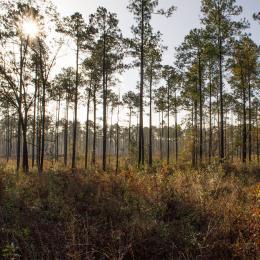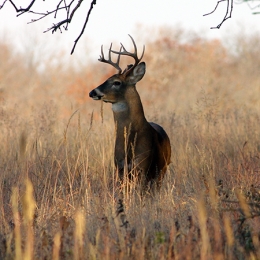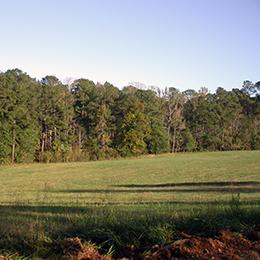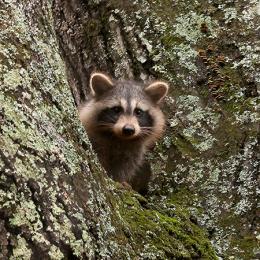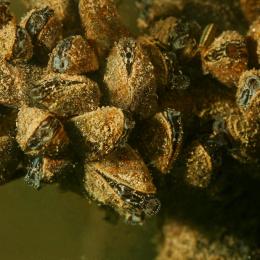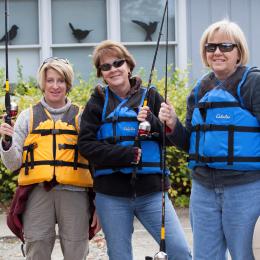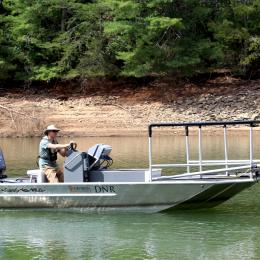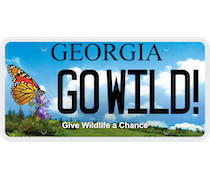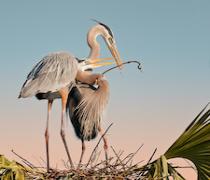
The Carolina wren is one of the many species singing in the dawn chorus (Ty Ivey, GNPA)
By Terry W. Johnson
(Editor’s note: This updated version of a 2018 column explores the amazing spring event called the dawn chorus.)
Whenever we talk about what makes spring such a glorious time of the year the discussion invariably turns to spring’s well-known virtues. The pleasing scents and kaleidoscope of colors displayed by spring flowers. The many green shades of the foliage. The pleasant weather.
Unfortunately, rarely is the dawn chorus – performed by some of the bird world's most accomplished vocalists – mentioned. Yet it is Mother Nature's most extravagant musical production of the year.
This oversight is probably because the magical event is unknown to all but the inveterate birders. You can blame, too, the fact that most Georgians have yet to stumble out of bed when this songfest is staged.
The dawn chorus commences long before the first rays of sunlight appear on the eastern horizon. Often, the songs start at about 4 a.m. In my neck of the woods (middle Georgia), the American robin often sings the overture. As the minutes pass, more and more birds begin their solos. Before long, the air is rich with the songs of countless birds. The cacophony peaks about an hour before daylight, then subsides, ending when the countryside is bathed in the first full light of day.
During this special time, the air is awash with songs vocalized almost exclusively by the males of scores of birds. These include the northern cardinal, Carolina wren, northern mockingbird, brown thrasher, vireos, eastern bluebird, wood pewee, wood thrush and many more.
The dawn chorus can be enjoyed daily throughout the entire spring. Since it begins before the first neotropical migrants arrive, fewer birds will be heard early in the spring than after the long-distance migrants arrive.
One thing I find amazing is this performance takes place in rural locales, suburban neighborhoods, cities and deep forests alike. I have enjoyed it in serene hardwood bottoms and large subdivisions. While I expect to hear a plethora of birds in or near woodlands, I have been pleasantly surprised how many birds I have heard singing in subdivisions. Although the variety of songsters performing in this seriously altered habitat is limited, the number of individual birds that participate in those choruses has been surprising
The songs of the birds contributing vary widely. However, each male bird has two things in mind: He is putting all other males of his species on notice that he has staked out a breeding territory and they should not even think about coming into this realm and trying to lure prospective mates away.
The second thing is that each male is announcing his presence to females in the area. It seems the females are attracted to males that display the loudest, finest and most energetic vocalizations. It is remarkable that the females can distinguish the calls of one male from another. To us, the songs uttered by each male of a species might seem identical; however, the females can detect the slight nuances between the songs.
I would be willing to bet those turkey hunters who ease into the woods long before daylight comes and gobblers leave their nighttime roosts hear the dawn chorus far more often than any other group of outdoor enthusiasts. To me, listening to the dawn chorus is one of the bonuses of hunting wild turkeys.
However, you don't need to be a turkey hunter to enjoy this amazing event. Regardless of where you live in the county, you don't even need to leave home to hear it.
If you haven’t heard the dawn chorus and you’re not adept at identifying birds by their songs and calls, download the free bird identification app called Merlin onto your smart phone or tablet. The Cornell University app will identify all of the birds you are likely to hear. Once your phone or tablet detects a song, the name and picture of the songster appears.
I am certain that the number of birds that are calling will surprise you. In addition, knowing the names of the birds singing adds a whole new dimension to your enjoyment of the event. Over time, it will also help you learn to identify the different species without the aid of Merlin.
If you want to be present at the next dawn chorus, set the alarm clock for well before daylight. Then go outside, sit down in a lawn chair and listen. Don't be discouraged if you do not hear many birds when you take your seat in nature's concert hall. If you have the patience to sit through the concert until the last note is sung, you will probably be astounded there are so many birds within earshot.
In fact, do not be surprised if you are left asking yourself whether the dawn chorus is a symphony or what the father of wildlife management, Aldo Leopold, described as bedlam.
Terry W. Johnson is a retired Georgia DNR program manager and executive director of The Environmental Resources Network, or TERN, the friends group of DNR’s Wildlife Conservation Section. Check out past columns, his Backyard Wildlife Connection blog and his book “A Journey of Discovery: Monroe County Outdoors.” Permission is required to reprint a column.







